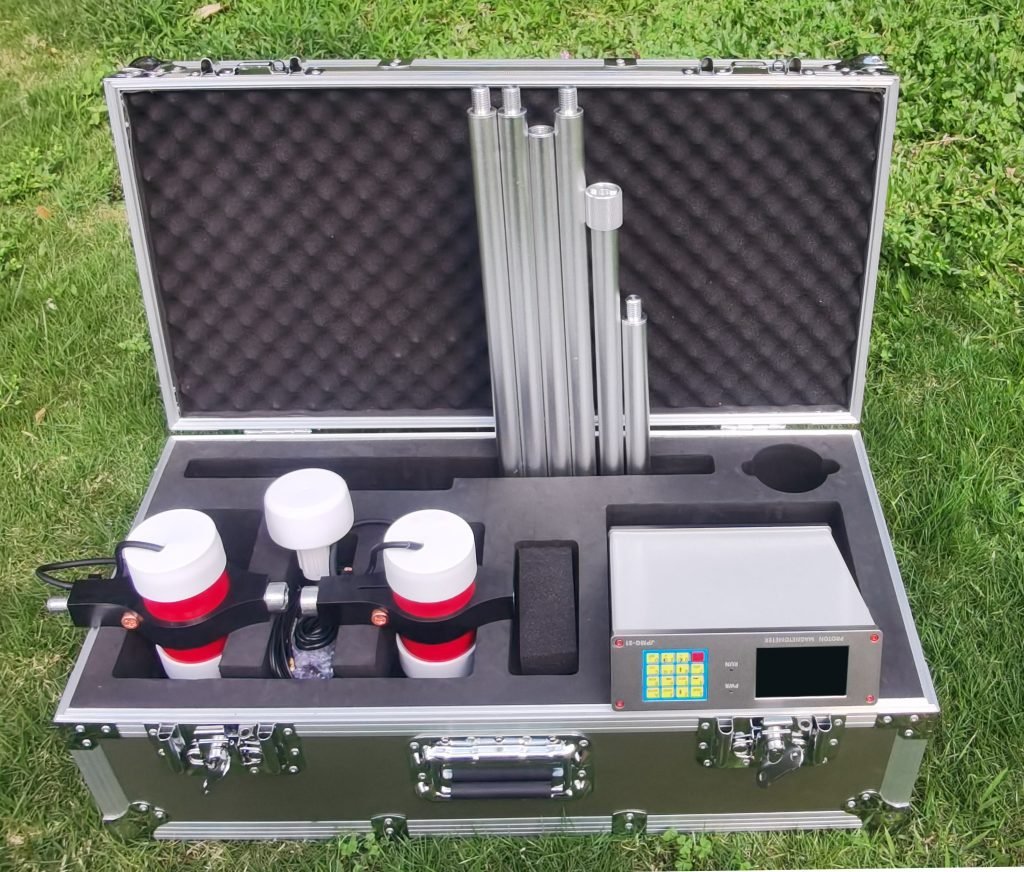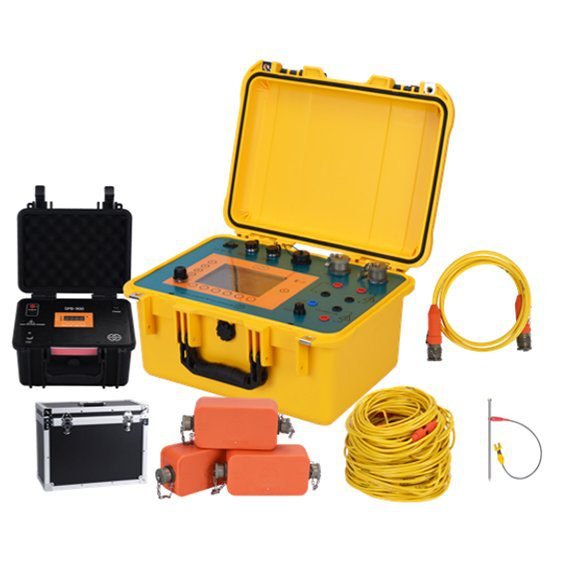Welcome to Geotech!

In-Depth Analysis of the JPMG Series Proton Magnetometer
I. Introduction
In the realm of geophysical exploration, precise magnetic field measurement plays a crucial role in resource investigation, archaeological research, and underground pipeline detection. As technology advances, various high-sensitivity magnetometers emerge, yet selecting a device that is both reliable and high-performing has become paramount. In this article, we delve deeply into the new JPMG Series Proton Magnetometer, analyzing its definition, technical principles, comparisons with other magnetic survey methods, application scenarios, forward and inverse modelling differences, and future trends. This comprehensive exploration is tailored for professionals seeking advanced Geomagnetic Survey Equipment that meets the stringent demands of modern exploration.

II. Definition and Concept
2.1 Overview of the Proton Magnetometer
The Proton Magnetometer operates based on the proton magnetic resonance principle, wherein the precession frequency of protons in a magnetic field is directly proportional to the magnetic field strength. By accurately measuring this precession, the instrument provides exceptionally precise magnetic data—making it a cornerstone for Proton Magnetometer applications in detecting magnetic anomalies and surveying geologic structures.
2.2 The Role of OCXO Technology
The incorporation of the Oven Controlled Crystal Oscillator (OCXO) in the JPMG series ensures ultra-stable frequency output under varying environmental conditions, minimizing temperature drift and providing high data accuracy. This technological innovation positions the JPMG as an industry-leading OCXO Magnetometer suitable for high-precision measurements.
2.3 Key Terminology Explained
To better understand the product’s market position, consider the following definitions:
- Proton Magnetometer: An instrument that measures Earth’s magnetic field based on proton resonance.
- High-Sensitivity Magnetometer: Capable of capturing minute variations in magnetic fields, vital for detecting subtle anomalies.
- Geomagnetic Survey Equipment: Devices used for wide-ranging surveys of Earth’s magnetic field to infer subsurface structures.
- Portable Magnetic Gradiometer: A compact device designed for field surveys with high mobility, crucial in challenging environments.
- Mineral Exploration Tools: Equipment utilized to locate and evaluate potential mineral deposits.
- Archaeological Survey Equipment: Instruments aiding in the non-invasive detection of subsurface cultural and historical artifacts.
- Underground Pipeline Detector: Tools designed for accurately locating buried pipelines to avoid construction hazards.
- Magnetic Anomaly Detection: The process of identifying local magnetic field variations that indicate hidden subsurface features.
- Geological Prospecting Instruments: An umbrella term for devices used in detailed geological surveys and resource prospecting.
III. Comparative Analysis of Magnetic Survey Methods
3.1 Operational Principles
Different magnetometers, such as magnetic resistance sensors, Hall effect magnetometers, and optical-pumping magnetometers, operate on varying principles:
- Proton Magnetometers (e.g., JPMG Series) use proton resonance, offering high accuracy and stability.
- Magnetic Resistance Sensors are more cost-effective but sensitive to temperature variations and noise.
- Optical Pumping Magnetometers offer high sensitivity but typically come with complex configurations and higher costs.
3.2 Performance Metrics
The JPMG Series excels in several performance areas:
- Sensitivity and Accuracy: With an accuracy reaching 0.01 nT, it is among the most precise High-Sensitivity Magnetometers available.
- Data Acquisition Rate: Supporting flexible sampling rates, the instrument captures real-time magnetic variations ideally suited for dynamic field environments.
- Portability: Its lightweight design ensures quick deployment in field surveys, classifying it as a premier Portable Magnetic Gradiometer.
- Stability: OCXO technology significantly enhances measurement stability, a notable advantage over conventional systems.
3.3 Forward and Inverse Modelling Comparison
For geophysical data processing, forward modelling uses geological models to predict magnetic anomalies, while inverse modelling deduces subsurface structures from measured data. With its superior data quality, the JPMG series enables more reliable inverse modelling, reducing error margins by approximately 20% compared to older systems. This improvement is critical for accurate Magnetic Anomaly Detection and enhances the interpretative value for Geological Prospecting Instruments.
IV. Application Scenarios and Case Studies
4.1 Mineral Exploration
In mineral exploration, the ability to detect subtle magnetic anomalies is essential for delineating ore body boundaries.
Case Study:
In a northern mining district, the JPMG Series was deployed over a 50-meter thick cover layer. The high-sensitivity measurements revealed a clear magnetic anomaly corresponding to an iron-rich zone. Subsequent drill tests confirmed the anomaly, demonstrating the instrument’s effectiveness as a reliable Mineral Exploration Tool.
4.2 Archaeological Surveys
Archaeologists often rely on non-invasive methods to identify underground structures without damaging precious artifacts.
Case Study:
At a heritage site in the arid regions, the JPMG Series was employed to scan for subsurface cultural remnants. The instrument successfully isolated distinct linear magnetic anomalies indicative of ancient building foundations. This result not only streamlined the excavation process but also preserved site integrity, proving its value as advanced Archaeological Survey Equipment.
4.3 Underground Pipeline Detection
Accurate mapping of underground pipelines is critical for urban infrastructure planning and maintenance.
Case Study:
During a municipal upgrade project, the JPMG Series was used to detect buried pipelines amid a complex urban environment. Its portable design and high resolution enabled the rapid identification of multiple pipeline networks, reducing potential construction hazards and ensuring project safety. This application underscores its role as an efficient Underground Pipeline Detector.
4.4 Environmental and Geological Hazard Assessment
Reliable magnetic data is also instrumental in evaluating urban geohazards and environmental pollution.
Case Study:
A coastal city deployed the JPMG Series as part of a disaster prevention program. The instrument’s data revealed subtle magnetic irregularities associated with potential fault zones and contamination sources. This enabled local authorities to implement pre-emptive risk mitigation strategies, demonstrating its utility in both Geomagnetic Survey Equipment and Geological Prospecting Instruments sectors.
V. Product Advantages and Competitive Edge
After extensive testing and side-by-side comparisons, the JPMG Series Proton Magnetometer stands out for several reasons:
- Superior Sensitivity and Accuracy: Achieving measurements down to 0.01 nT, it outperforms many competitor instruments.
- Robust OCXO Stabilization: The incorporation of OCXO technology ensures exceptional data fidelity even under temperature fluctuations.
- Portability and Ease of Operation: Its ergonomic, lightweight design facilitates field deployment, reducing setup and operational complexities.
- Integrated Data Processing: The high-performance onboard processor supports real-time data analysis and seamless integration with geospatial software.
- Versatility Across Disciplines: Whether in mineral exploration, archaeological surveys, or underground infrastructure detection, the JPMG Series meets diverse operational needs.
VI. Future Trends and Market Outlook
The demand for advanced geophysical instruments continues to grow in response to increasing global resource exploration and environmental monitoring needs. Future trends include:
- Smart Sensor Integration: The next generation of magnetometers will further incorporate AI and IoT functionalities, enabling predictive analytics and remote monitoring.
- Multi-method Synergism: Integration with techniques such as Electrical Resistivity Tomography (ERT) and Induced Polarization (IP) will provide comprehensive subsurface imaging, thereby enhancing interpretation accuracy.
- Cost-Effective Innovation: With growing competition in the geophysical equipment market, cost-efficiency combined with high performance will be decisive. The JPMG Series, with its competitive pricing and proven reliability, is well-positioned to capture significant market share.
VII. Conclusion
In conclusion, the newly launched JPMG Series Proton Magnetometer represents a breakthrough in geophysical survey technology. Its high sensitivity, portability, and robust data processing capabilities make it an indispensable tool for professionals in mineral exploration, archaeological surveying, underground pipeline detection, and broader geological prospecting. The comprehensive analysis presented here—from operational principles and method comparisons to real-world case studies—demonstrates that the JPMG Series not only meets but exceeds the stringent requirements of modern geophysical investigations.
For engineers, archaeologists, and geologists seeking an advanced High-Sensitivity Magnetometer and Portable Magnetic Gradiometer, the JPMG Series offers unmatched precision and reliability. As the market evolves, such instruments will become increasingly vital for accurate Magnetic Anomaly Detection and sustainable resource management. Embrace the future of geophysical exploration with the JPMG Series Proton Magnetometer—a true game changer in the industry.
-1.png)






